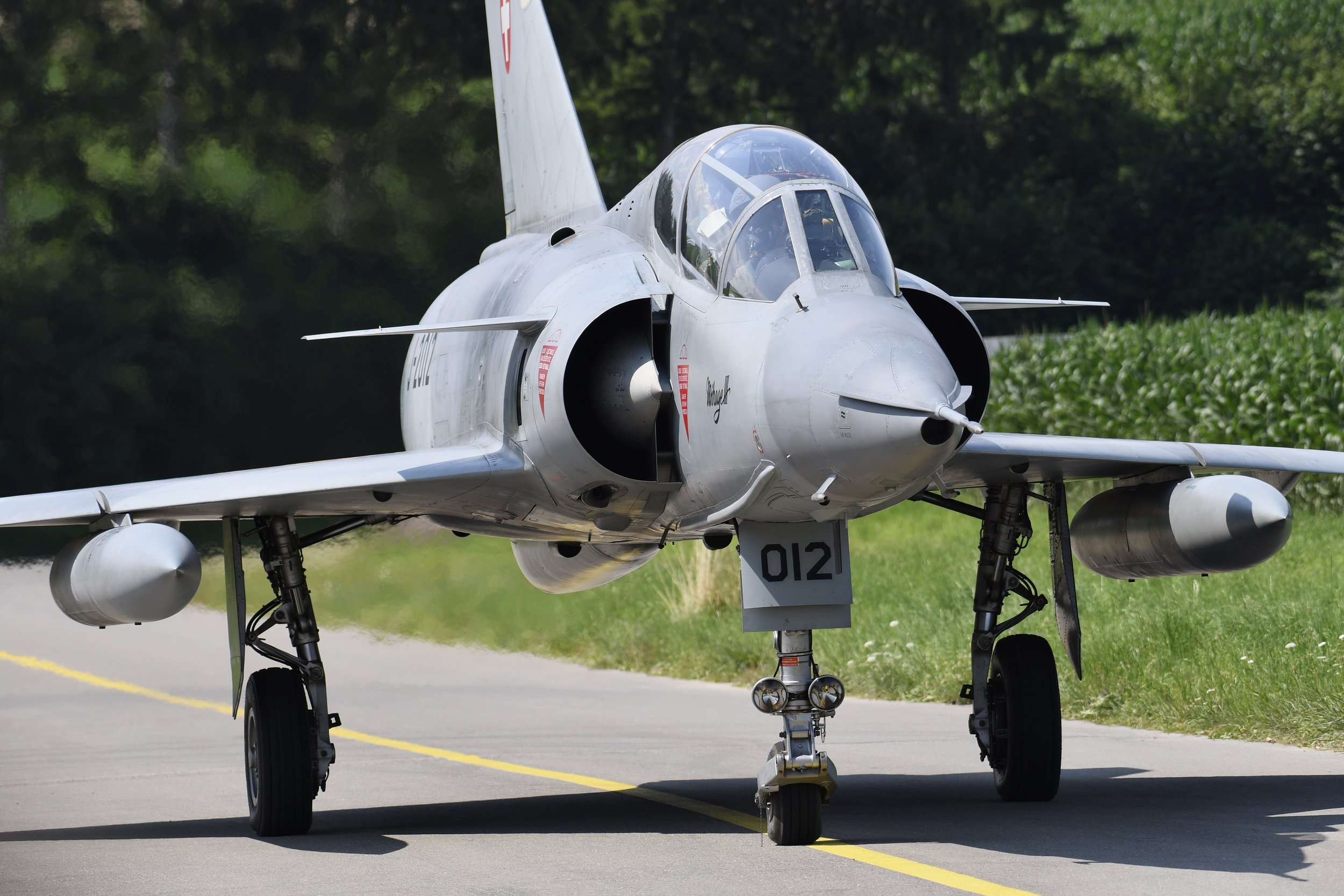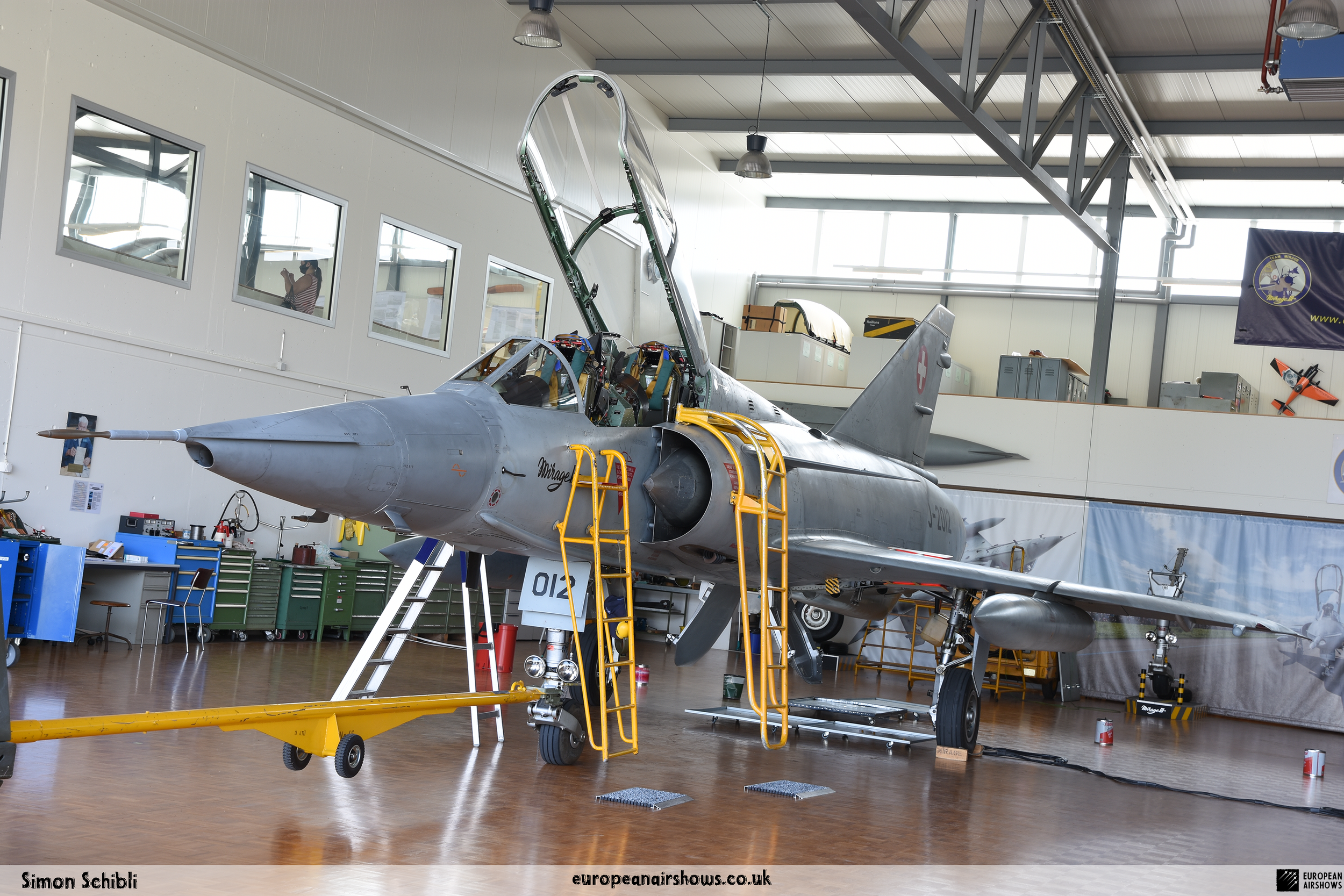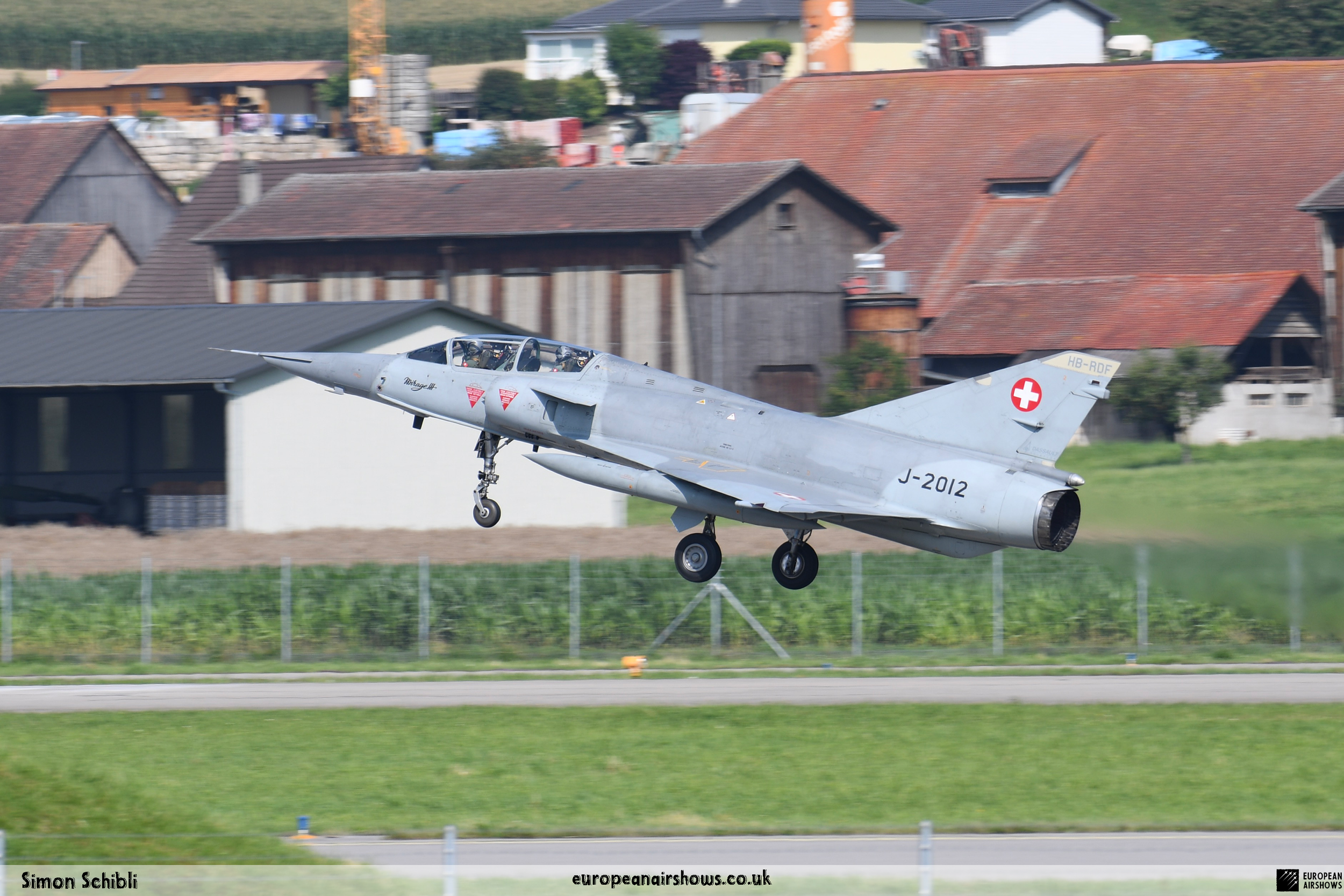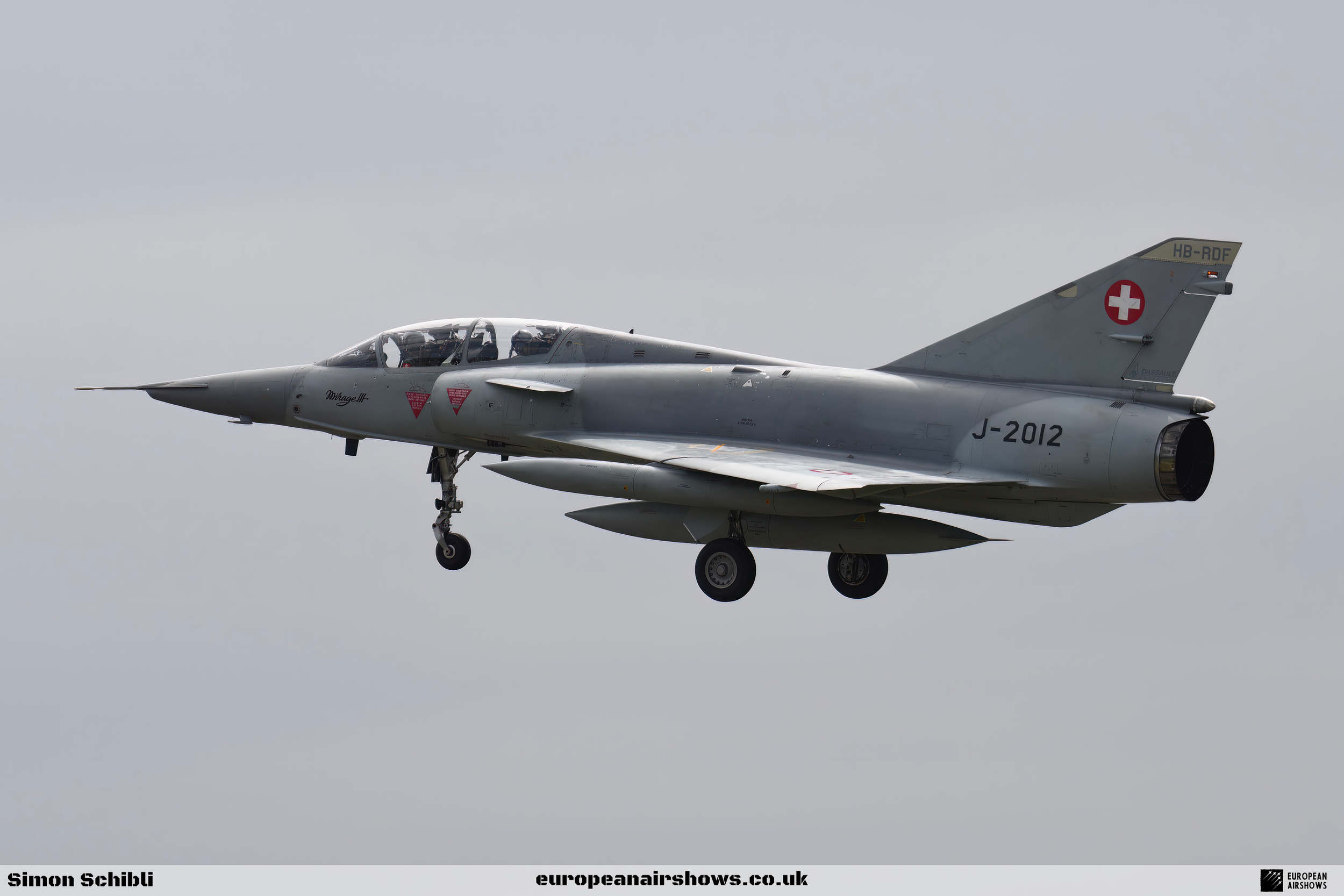
November 17 / Dassault Mirage III first flight
First Flight 17 November 1956
Dassault Mirage III
The Dassault Mirage III is a renowned family of fighter aircraft developed by the French company Dassault Aviation. It holds the distinction of being the first Western European combat aircraft to achieve speeds exceeding Mach 2 in horizontal flight, a feat accomplished on October 24, 1958. The journey of the Mirage III began in 1952 when the French government issued a specification for a lightweight, all-weather interceptor. Dassault responded with their design, initially known as the Mirage I. After successful flight tests in 1954, where speeds of Mach 1.6 were reached, it became apparent that a more substantial aircraft was necessary to accommodate the required equipment and payloads. Although the Mirage II and MD 610 Cavalier were considered, they were ultimately discarded in favor of a more advanced design, the Mirage III, powered by the newly developed Snecma Atar afterburning turbojet engine.
The Mirage III made its first major production flight in October 1960 with the Mirage IIIC model. Operational deliveries of this model began in July 1961, with the French Air Force acquiring a total of 95 Mirage IIICs. This model was quickly followed by numerous other variants. The Mirage III was produced in large numbers for both the French Air Force and numerous international customers. Notable overseas operators included Argentina, Australia, South Africa, Pakistan, and Israel, among others. The Mirage III is often considered a second-generation fighter aircraft and enjoyed a lengthy service life with several operators. It remained an effective aircraft in close-range dogfighting for a considerable period. During its service with the French Air Force, the Mirage III was typically armed with air-to-ground ordnance or R.550 Magic air-to-air missiles. Its versatile design allowed for adaptations into various roles, including trainer, reconnaissance, and ground-attack versions, along with several derivatives like the Dassault Mirage 5, Dassault Mirage IIIV, and Atlas Cheetah. Some operators, such as the Pakistan Air Force, undertook extensive modification and upgrade programs for their Mirage III fleets.
The Mirage III saw active combat in multiple conflicts. The Israeli Air Force was one of its most prolific operators, deploying the Mirage IIIs during the Six-Day War and the Yom Kippur War. In the Six-Day War, the aircraft was used for both air superiority and strike missions, while in the Yom Kippur War, it was employed exclusively in air-to-air combat alongside the IAI Nesher, an Israeli-built derivative of the Mirage 5. Ace pilot Giora Epstein achieved all his kills flying either the Mirage III or the Nesher. During the South African Border War, the Mirage III constituted a significant portion of the South African Air Force’s fleet, with Mirage IIICZ interceptors, Mirage IIIEZ fighter-bombers, and Mirage IIIRZ reconnaissance fighters. Following the introduction of the newer Mirage F1, the Mirage III was primarily used for secondary roles like daytime interception, base security, reconnaissance, and training. The Argentine Air Force used the Mirage IIIEA during the Falklands War, but its lack of aerial refueling capability limited its effectiveness in the conflict. Even with drop tanks, the Mirages could only sustain five minutes of endurance within the combat area around the British fleet.
The Mirage III’s development traces back to studies conducted by the French Defence Ministry starting in 1952. At the time, various nations were interested in developing a light fighter, inspired by combat experiences during the Korean War and the performance of the Soviet-built Mikoyan-Gurevich MiG-15. Western nations, including France, sought to explore the potential of a jet-powered swept-wing fighter. In response to the French government’s 1952 specification for a lightweight, all-weather interceptor, Dassault Aviation, Sud-Est, and Sud-Ouest submitted designs. Dassault’s submission, the MD.550 Mystère Delta, featured a tailless delta configuration and was powered by Armstrong Siddeley Viper afterburning turbojet engines. The design also included provisions for a secondary propulsion system using a SEPR-built liquid-fuel rocket engine.
The MD.550 Mystère Delta’s basic layout featured a tailless delta configuration with a large vertical stabilizer and rudder. However, this configuration imposed limitations, such as the absence of a horizontal stabilizer, which resulted in a long takeoff run and high landing speed. Despite these limitations, the delta design was simple, robust, and capable of achieving high speeds in straight-line flight. British aviation author Derek Wood noted a resemblance between the MD.550 Delta and the British Fairey Delta 2, an experimental aircraft that set a world speed record in 1956. Dassault engineers observed the Delta 2’s trials in France, gaining valuable data on delta wing aircraft performance, which supported the Mirage III’s development.
The first prototype of the MD.550 Mystère Delta flew on June 25, 1955, reaching a maximum speed of Mach 1.15. After initial flights, it was redesigned with a reduced vertical stabilizer and equipped with afterburners and a rocket motor, becoming the Mirage I. Although the Mirage I achieved speeds of Mach 1.6 with rocket assistance, it was deemed too small for practical armament, leading to its eventual scrapping. Dassault then pursued a successor, considering the Mirage II, which was ultimately bypassed for the more ambitious Mirage III, powered by the Snecma Atar afterburning turbojet engine. The Mirage III incorporated new design principles, such as the transonic area rule concept, resulting in its distinctive “wasp waist” configuration. On November 17, 1956, the Mirage III prototype made its first flight, achieving speeds of Mach 1.52 during its tenth flight. The addition of manually-operated intake half-cone shock diffusers, known as “mice,” allowed the prototype to reach Mach 1.65, and with the SEPR 66 rocket, Mach 1.8.
The Mirage III’s success led to an order for 10 pre-production Mirage IIIA fighters, initially conceived as interceptors but later developed for additional roles. The Mirage IIIA featured an enlarged wing, an Atar 09B turbojet engine, and retained the SEPR 841 rocket engine. It was also equipped with Thomson-CSF Cyrano Ibis air intercept radar and operational-standard avionics. The first Mirage IIIA flew in May 1958, and on October 24 of that year, it achieved a top speed of Mach 2.2, making it the first Western European aircraft to exceed Mach 2 in level flight. The Mirage IIIA’s test regime included evaluations of the rocket motor, drop tanks, and other systems. One Mirage IIIA was powered by a Rolls-Royce Avon engine for Australian evaluation, designated Mirage IIIO, but the Avon powerplant was not adopted for production.
The Mirage IIIC, the first major production model, took its maiden flight in October 1960. It was a single-seat interceptor with an Atar 09B turbojet engine and armed with twin 30 mm DEFA cannons. Early Mirage IIICs had three stores pylons, later increased to five, and carried air-to-air missiles like the AIM-9B Sidewinder and Matra R530. The French Air Force acquired 95 Mirage IIICs, with operational deliveries starting in July 1961. The Mirage IIIC remained in service until 1988.
The French Air Force also ordered the two-seat Mirage IIIB operational trainer, which first flew on October 21, 1959. The Mirage IIIB lacked radar and the SEPR rocket but could carry external stores. Various Mirage IIIB variants were produced, including trials aircraft, inflight refueling trainers, and models with features of the Mirage IIIE. One Mirage IIIB was fitted with a fly-by-wire flight control system for testing in the mid-1970s.
While the Mirage IIIC was in production, Dassault developed the multirole/strike variant Mirage IIIE. The Mirage IIIE featured a forward fuselage extension for increased avionics space and fuel capacity, addressing criticisms of the Mirage IIIC’s range. Many Mirage IIIEs had a Marconi continuous-wave Doppler navigation radar and a high-frequency antenna on the tailplane. The Mirage IIIE’s avionics included Thomson-CSF Cyrano II dual-mode radar and a radar warning receiver. The first production Mirage IIIE was delivered to the French Air Force on January 14, 1964, with 192 aircraft eventually delivered. The Mirage IIIE became the most widely exported version by 1971.
The Mirage III family also included dedicated reconnaissance variants, grouped under the Mirage IIIR designation. These aircraft had a Mirage IIIE airframe with Mirage IIIC avionics and a camera nose. The Mirage IIIRD variant featured additional cameras and avionics from the Mirage IIIE. The French Air Force ordered 50 Mirage IIIRs and later 20 Mirage IIIRDs. Several export customers, including Switzerland, also procured reconnaissance Mirages. The Mirage IIIR entered service before the Mirage IIIE.
Mirage III Facts
First Mach 2 European Jet: The Dassault Mirage III was the first Western European combat aircraft to exceed Mach 2 in horizontal flight, achieving this milestone on October 24, 1958.
Delta Wing Design: The Mirage III featured a tailless delta wing design, which provided high-speed performance and a simple, robust airframe, although it imposed some limitations on manoeuvrability and landing speed.
Versatile Roles: The Mirage III was designed to be versatile, with variants serving in roles such as interceptor, multirole/strike fighter, reconnaissance, and trainer. It also led to several derivatives, including the Mirage 5 and Atlas Cheetah.
Widespread Export: The Mirage III was exported to numerous countries, including Argentina, Australia, South Africa, Pakistan, and Israel, making it one of the most widely used fighter aircraft of its time.
Combat Proven: The Mirage III saw combat in several conflicts, notably being used by the Israeli Air Force during the Six-Day War and the Yom Kippur War, and by the Argentine Air Force during the Falklands War.
Innovative Design Features: The Mirage III incorporated the transonic area rule, which resulted in its distinctive “wasp waist” configuration, and featured manually-operated intake half-cone shock diffusers known as “mice” to manage air intake at high speeds.
Long Service Life: Many countries operated the Mirage III for decades, with some, like the French Air Force, keeping it in service until 1988. Its longevity was due in part to its adaptability and the extensive upgrade programs conducted by some operators.
Significant Production Numbers: The Mirage III was produced in large numbers, with the French Air Force alone acquiring 95 Mirage IIICs and 192 Mirage IIIEs. Numerous other variants were produced for export.
Influential in Fighter Design: The Mirage III’s success and performance influenced the design and development of subsequent fighter aircraft, both within Dassault and among other aircraft manufacturers worldwide.
Radar and Avionics: The Mirage IIIE variant featured advanced avionics for its time, including the Thomson-CSF Cyrano II radar and a radar warning receiver, enhancing its capabilities in both air-to-air and air-to-ground roles.























